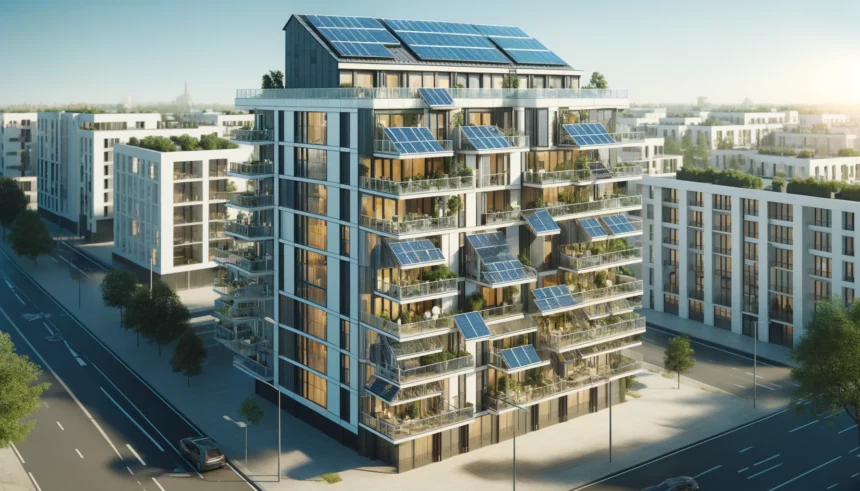Germany is seeing a surge in the popularity of solar balconies, with over 400,000 plug-in solar systems now installed, 50,000 of which were added just in the early months of 2024. This growth is a testament to Germany’s strong interest in solar energy, according to industry experts.
Solar balconies are part of a broader effort in Europe to use every possible space for generating solar power. This includes unusual places like train tracks and car roofs. But balconies are special because they’re easier for more people to set up and use.
How Do Solar Balconies Work?
Unlike the large solar setups on roofs, balcony solar systems are much smaller, typically involving one or two panels that can be plugged directly into a household socket. They generate about 10% of the energy compared to full rooftop systems. In Germany alone, these systems add up to about 200 megawatts of power.
The Appeal of Balcony Solar Systems
One of the main reasons these systems are so popular is that they offer a solar option for those who might not have access otherwise—like renters or those living in buildings where rooftop solar isn’t feasible due to structural limitations or regulations.
The process is simple: the panels are attached to a frame on the balcony and connected to an inverter that changes the direct current (DC) into alternating current (AC), which then feeds into the home’s electrical system through a standard plug.
What Makes Germany a Leader in Balcony Solar?
Germany has been a pioneer in solar technology, especially from the early 2000s, encouraging people to adopt solar power through incentives like feed-in tariffs, which guarantee a fixed price for solar electricity fed back into the grid. The government has also simplified regulations and offered tax breaks to make balcony solar more attractive. Some regions offer subsidies that can cover up to half the cost of a new system.
The Future of Balcony Solar in Germany
The German government is now considering policies to allow up to four panels per balcony system, which could further boost their adoption. Despite regulatory concerns in some other European countries, Germany’s example shows a promising path forward for expanding solar power in densely populated areas and apartment buildings.
Before You Buy
If you’re thinking about getting a solar system for your balcony, remember to check for sustainable manufacturing practices and consider options for small-scale storage if you’re not home during the day. Some systems come with apps that help monitor electricity production and usage.
Remember, while installing these systems can be a DIY project, safety is crucial. Proper mounting is essential to prevent accidents, especially in high-rise buildings.
In summary, Germany’s embrace of balcony solar systems is transforming the way many residents consume energy, making it easier and more accessible to participate in the shift toward renewable energy.
















